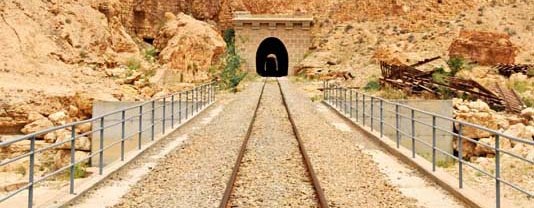One of the highest developed and best-structured railway networks on the African continent, a strategic infrastructure serving the country’s economy, run by SNCFT (Société Nationale des Chemins de Fer Tunisiens – Tunisian Railways)
Today Tunisia is without doubt one of the most modern and reliable countries in Africa, also for investors from all over the world. The democratic transition, following the Arab Spring which began in Tunisia, with the adherence to pledges made and the consolidation of the achievements attained (in particular modernity, economic openness, the priority given to direct foreign investments), has allowed Tunisia to hold its position as economic leader in terms of competitiveness in Africa and on the southern shores of the Mediterranean and to remain the primary industrial supplier to Europe in the Mediterranean area. Today 48% of the population is under 25 years of age: Tunisia is a young country, but above all a country rich in skilled and competitive labour. Infrastructures are modern and their development is in full swing. The Tunisian rail network is also amongst the most developed of all the North African countries facing onto the Mediterranean. Run by the SNCFT, the Société Nationale des Chemins de Fer Tunisiens, founded on 27 December 1956, it is divided into two railway systems with two different track gauges – inherited from its 150 years of history. Consequently today, SNCFT manages 471 km of 1,435 mm standard gauge network in the north and 1,688 km of metre gauge network in the central and southern parts of the country. Only 8 km of track are double gauge. In all, the network covers 2,167 km (mainly diesel traction) and develops a significant amount of both freight and passenger traffic. The maximum permitted speed is 130 km/h on the metre gauge lines and 140 km/h on the standard gauge lines, with a maximum axle load of 16 and 20 tons/axle respectively. Approximately 250 trains are timetabled to run each day, 160 of which are passenger trains serving the metropolitan area of Tunis, 63 are long-distance trains and 25 are for freight services. In terms of ridership, approximately 34.5 million passengers/year are carried on the Tunis metropolitan area services and 5.5 million on the long-distance routes. In the freight sector, at over 8 million tons/year, the phosphates extracted from the country’s important mines definitely represent the biggest share to which a further 3 million tons of other freight must be added. These figures illustrate a network which on the whole is in good health and which can count on rolling stock for the most part modern and adequate.
by Franco Tanel
Photo: Red_Lizard_lineBy Dennis Jarvis – Wikimedia Commons
Full article is available only for registered users.
Click the link below to download pdf version of Railway Engineering
